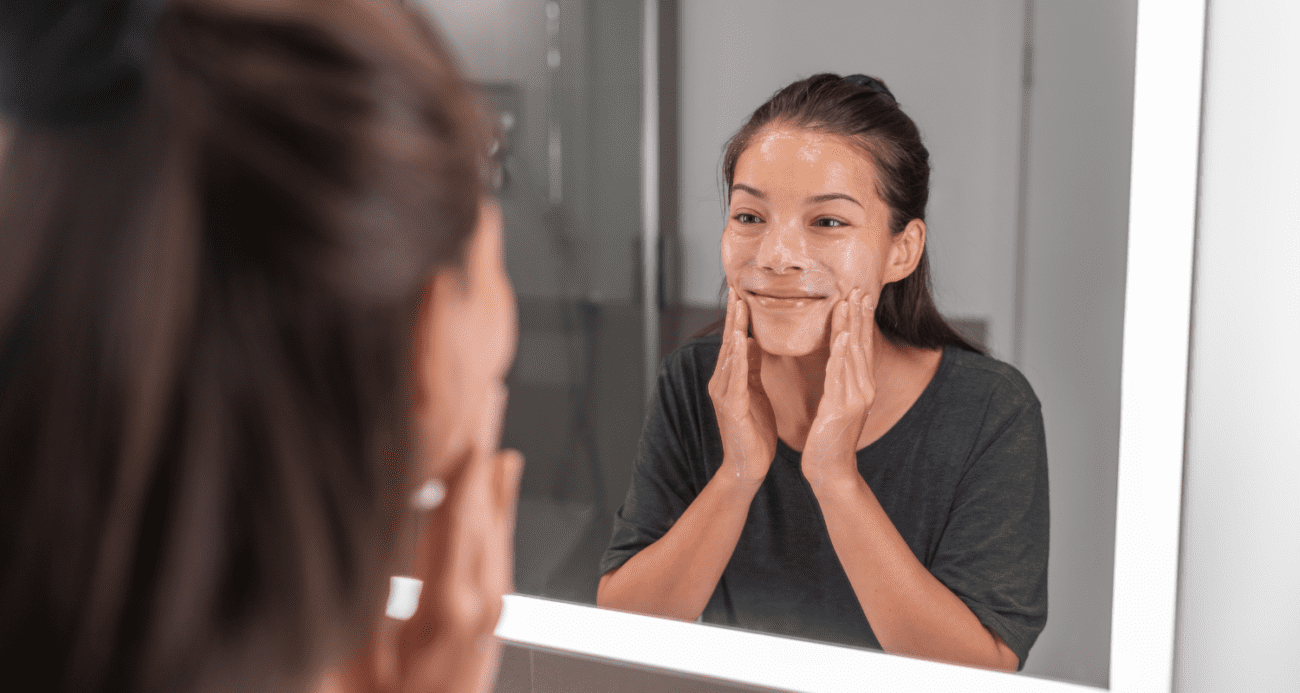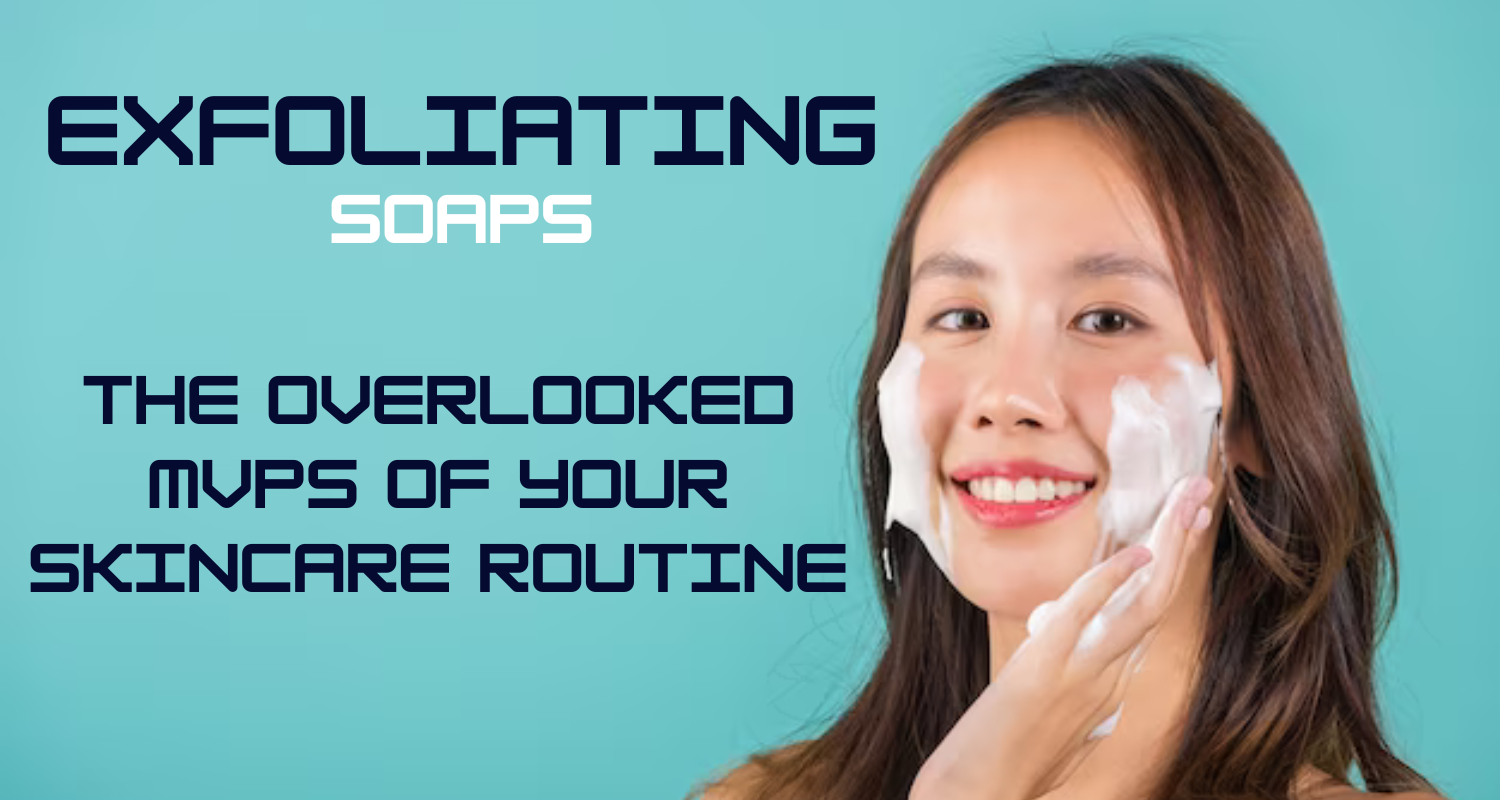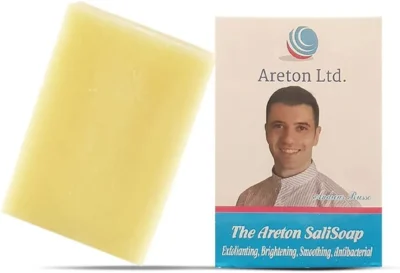Introduction to Exfoliating Soaps
Exfoliating soaps are bar soaps that contain small, abrasive particles designed to slough off dead skin cells and reveal smoother, brighter skin underneath. Unlike regular bar soaps that just cleanse the skin’s surface, exfoliating soaps provide an invigorating scrub that removes dulling skin cell buildup.
There are two main types of exfoliating soaps:
Physical exfoliants – 1 These soaps contain small granules or microbeads made from ingredients like sea salt, coffee grounds, crushed almonds, oatmeal, pumice, and jojoba beads. The particles provide a gentle abrasion to buff away dead cells.
Chemical exfoliants – 2 These soaps contain alpha hydroxy acids (AHAs) like glycolic acid or beta hydroxy acids (BHAs) like salicylic acid. The acids dissolve the “glue” that holds dead skin cells together to reveal fresher skin.
The main benefits of exfoliating soaps include:
- Removing dull surface skin cells
- Unclogging pores and preventing acne
- Smoothing rough patches and reducing flakiness
- Improving skin texture and brightness
- Allowing moisturizers to better absorb
- Minimizing the appearance of fine lines and wrinkles
- Prepping skin for a closer shave
By regularly using an exfoliating soap in place of a normal cleanser, you can keep your complexion looking fresh, radiant and youthful.
How Exfoliating Soaps Work
Exfoliating soaps work in two main ways – through mechanical exfoliation and chemical exfoliation.
Mechanical exfoliation uses physical particles in the soap to slough off dead skin cells. Ingredients like oats, salt, sugar, seeds, or beads provide a gritty texture that scrubs away dull skin when you wash. This reveals newer, brighter skin underneath.
Chemical exfoliation uses ingredients like alpha hydroxy acids (AHAs) and beta hydroxy acids (BHAs) that dissolve the bonds between dead skin cells. AHAs like glycolic acid and lactic acid work on the surface, while BHAs like salicylic acid can penetrate deeper. This gentle dissolving action unveils fresh new skin.
Some exfoliating bars contain both physical scrubbing agents and chemical exfoliants to provide thorough exfoliation through multiple mechanisms. The combination of mechanical and chemical exfoliation can be quite effective at transforming dull, lifeless skin.
Benefits of Using Exfoliating Soaps
Exfoliating soaps provide numerous skin benefits when used properly. Here are some of the top reasons to use them:
Removes Dead Skin Cells: The gritty particles in exfoliating soaps physically scrub away and slough off the top layer of dead skin cells. This helps reveal the newer, healthier skin underneath. It accelerates the body’s natural process of skin cell turnover.
Unclogs Pores: By removing dead skin cells and other debris, exfoliating soaps help keep pores clear of congestion. This can reduce breakouts and blackheads. The deep cleaning of pores also allows other skincare products to better penetrate.
Brightens Skin: Getting rid of dull, dead skin cells enables the skin to look fresher and brighter. Increased cell turnover leads to a more radiant, youthful glow. Exfoliating also helps fade superficial discoloration.
Smoothens Skin Texture: The physical exfoliation smoothens rough spots and improves overall skin texture. It diminishes the appearance of fine lines, acne scarring, and other irregularities. Your skin will look and feel smoother.
By sloughing off dead skin cells, unclogging pores, brightening tone, and smoothing texture, exfoliating soaps offer powerful skincare benefits when used properly. They can be an effective addition to your regular cleansing routine.

Key Ingredients to Look for
Exfoliating soaps often contain gentle abrasives and chemical exfoliants to slough off dead skin cells and reveal brighter, smoother skin. Here are some key ingredients to look for:
AHA/BHA acids: Alpha hydroxy acids (AHAs) like glycolic acid and beta hydroxy acids (BHAs) like salicylic acid are chemical exfoliants that dissolve the bonds between skin cells. They exfoliate the surface and within pores to fight acne, improve texture, and reduce fine lines.
Jojoba beads: These tiny, spherical beads made from jojoba wax provide gentle physical exfoliation. Jojoba is soothing and moisturizing for skin. The beads are biodegradable, unlike plastic microbeads.
Pumice: This porous volcanic rock is an abrasive exfoliant that sloughs off dead cells. It deeply cleanses and detoxifies skin. However, it can be harsh for some skin types.
Loofah: Dried loofah gourds are traditionally used as scrubbing tools. Loofah soaps have embedded loofah fibers that provide gentle manual exfoliation as you lather. The fibers stimulate circulation and thoroughly cleanse.
Look for soaps containing these ingredients to effectively yet gently exfoliate, brighten dullness, smooth texture, and deeply clean pores. Be mindful of any sensitivities and avoid harsh scrubs if you have delicate skin.
How to Use Exfoliating Soaps
Exfoliating soaps should be used 1-2 times per week, depending on your skin type. Those with sensitive skin may only need to exfoliate once a week, while those with normal skin can likely use an exfoliating soap 2-3 times per week.
When using an exfoliating soap on your face, apply the soap to damp skin and use gentle, circular motions. Avoid rubbing too vigorously. Rinse thoroughly with lukewarm water.
On the body, exfoliating soaps can be used more liberally over areas like the back, arms, legs, and feet. Use light, sweeping motions rather than harsh scrubbing. Rinse well and pat dry.
After rinsing an exfoliating soap, be sure to remove all traces of the soap to avoid irritation or dryness. Splash your face with cool water and gently pat dry with a clean towel.
Top Exfoliating Bar Soaps
Exfoliating bar soaps can come in many formulations with different ingredients and levels of exfoliation. Here are some top picks:
Osea Ocean Cleansing Milk
Pros: Contains jojoba beads for gentle exfoliation. Also has soothing seaweed extract and hydrating oils like sunflower seed oil. Leaves skin smooth and moisturized.
Cons: On the pricier side. The jojoba beads may be too gentle for those wanting stronger exfoliation.
Origins Checks and Balances Frothy Face Wash
Pros: Uses finely ground rice particles to scrub away dead skin cells. Mint and essential oils leave skin feeling refreshed. Foams into a creamy lather.
Cons: May be too drying for some skin types. The rice powder can feel slightly abrasive to sensitive skin.
Shea Moisture African Black Soap Bar
Pros: Contains oats for gentle exfoliation along with shea butter to moisturize. Has tea tree oil to help clear acne and blemishes. Leaves skin feeling clean and soft.
Cons: Has a strong herbal scent that some may not like. Can dry out skin if not followed by a moisturizer.
Basis Sensitive Skin Bar
Pros: Ultra gentle on sensitive skin. Uses jojoba beads and ground walnut shells to lightly exfoliate. Free of dyes, fragrance, and irritants.
Cons: May not provide enough exfoliation for those with very oily or thick skin. The walnut shells may be too abrasive for some.
Nubian Heritage Indian Hemp & Haitian Vetiver Bar Soap
Pros: Contains crushed walnut shells for exfoliation. Neem oil helps improve skin tone and texture. Has a fresh, earthy scent.
Cons: Strong fragrance. Walnut shells may irritate very sensitive skin types. Can be drying if overused.
Potential Drawbacks
Exfoliating soaps can have some potential drawbacks to be aware of:
Overexfoliation
Using an exfoliating soap too frequently or scrubbing too hard can lead to overexfoliation, which damages the skin barrier. This can cause increased sensitivity, redness, dryness, flaking, stinging, and irritation. It’s important not to overdo it with exfoliating soaps. Using them 2-3 times per week is usually sufficient.
Irritation
The ingredients in exfoliating soaps like alpha hydroxy acids or beads/grains can be irritating for some skin types. The friction from scrubbing can also provoke irritation in sensitive skin. Redness, dryness, flaking, stinging, and itching are signs you may need to reduce use of exfoliating soaps.
Not Suitable for Sensitive Skin
People with sensitive, acne-prone, or rosacea affected skin need to be cautious with exfoliating soaps. The exfoliation and ingredients may worsen their condition. Those with eczema, psoriasis, or atopic dermatitis should also avoid exfoliating soaps, as they tend to be too harsh for these skin types. Stick to very gentle cleansers if you have sensitive or reactive skin.
Who Should Avoid Exfoliating Soaps?
Exfoliating soaps can be too harsh for some skin types. Those with sensitive skin or conditions like eczema or psoriasis should use caution with exfoliating soaps.
The gritty particles in exfoliating bars can cause irritation, redness, stinging, or inflammation. People with sensitive skin have a weakened skin barrier, making their skin more prone to reactions. The abrasive nature of the exfoliants may disrupt the skin barrier further and trigger sensitivity.
Those with eczema, psoriasis, or other inflammatory skin conditions should also avoid exfoliating soaps. The scrubbing and friction from the exfoliants can worsen inflammation, rashes, and flares. The ingredients may also irritate and dry out the skin, two things that skin conditions like eczema and psoriasis are especially vulnerable to.
If you have sensitive skin or a condition like eczema or psoriasis, it’s better to avoid exfoliating bar soaps. Stick to gentle cleansers without exfoliating beads or particles. Or look for exfoliants like chemical exfoliants, brushes, or cloths that may be gentler alternatives. Doing a patch test first is also recommended to check for any adverse reactions.
Tips for Safe Use
When using an exfoliating soap bar, it’s important to take precautions to avoid irritation or over-exfoliation. Here are some tips:
Patch test first. Before using an exfoliating soap all over, do a patch test on a small area of skin, like your inner arm. Check for any redness or irritation over 24-48 hours before full use.
Start slowly. Use the exfoliating bar just 1-2 times per week at first. Gradually build up frequency based on your skin’s tolerance. Using it daily may be too harsh for some skin types.
Moisturize after. Exfoliating can dry out skin, so apply a gentle, fragrance-free moisturizer after rinsing off the soap. This helps replenish moisture and prevent the skin’s moisture barrier from being compromised.
Avoid rubbing harshly. When cleansing with the bar, use light, circular motions. Don’t aggressively scrub or rub the skin raw. Let the ingredients in the soap provide the exfoliation.
Rinse thoroughly. Make sure to rinse the soap off completely to remove any residue. Leaving soap residue on can lead to irritation.
Listen to your skin. If your skin feels tight, dry or irritated after using an exfoliating soap bar, take a break from using it or reduce the frequency. Don’t try to “push through” if your skin is indicating it’s sensitive to the exfoliation.
The Takeaway
Exfoliating soaps are the unsung heroes of skincare. By gently removing dead skin cells, they reveal brighter, smoother, and more radiant skin. Key benefits of exfoliating soaps include:
- Deep cleansing of pores to prevent breakouts
- Smoothing away rough patches and uneven texture
- Improving circulation and radiance
- Allowing other skincare products to better absorb
When used properly 1-2 times per week, exfoliating soaps can make a big difference without irritating skin. Look for soaps with jojoba beads, ground nuts, oats, or fruit enzymes as natural exfoliants. Avoid over-scrubbing, and be cautious with sensitve skin types. Overall, exfoliating soaps deserve more credit as a simple, affordable way to transform dull, tired skin.
-
 Rated 0 out of 5¡A la Venta!Add to basket
Rated 0 out of 5¡A la Venta!Add to basket$10.00Original price was: $10.00.$5.99Current price is: $5.99. -
 Rated 0 out of 5¡A la Venta!Add to basket
Rated 0 out of 5¡A la Venta!Add to basket$10.00Original price was: $10.00.$5.99Current price is: $5.99.



